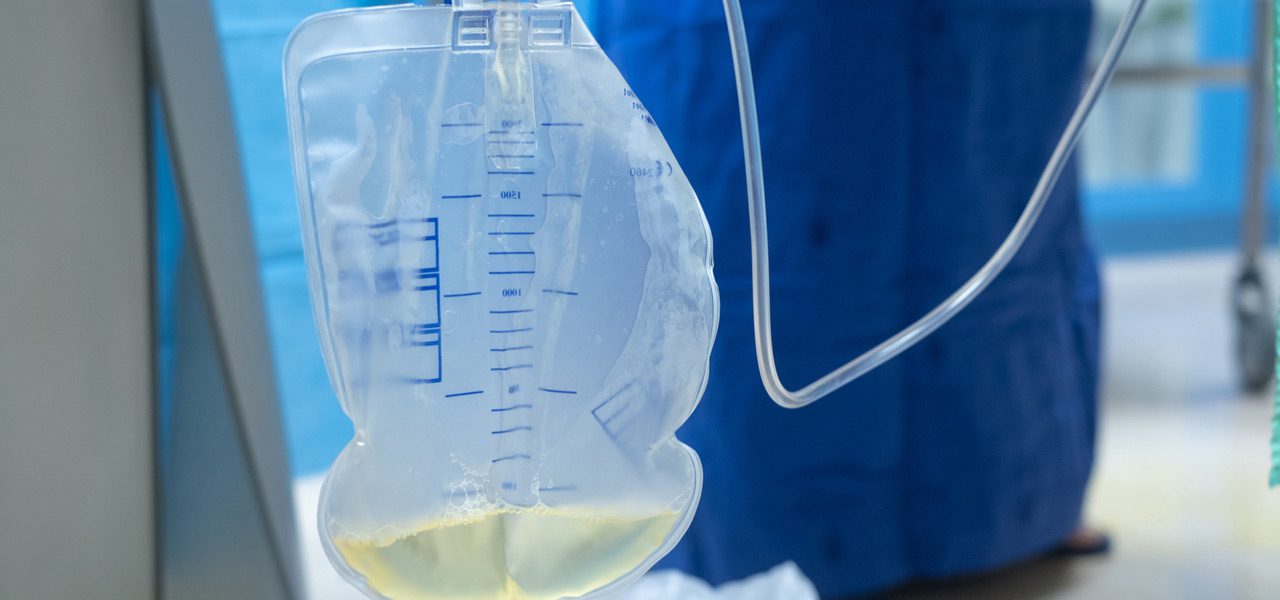

A Foley catheter drains urine from the bladder into a bag. During surgery, the catheter is placed in the bladder, along with a small balloon filled with fluid to keep it in place.
How The Foley Catheter Works
The Foley catheter is inserted into the urethra and pushed up until it reaches the bladder. A hole in the tube allows urine to flow out of the bladder, through the urethra, and into a collection bag.
Patients may need a catheter for a few days after surgery if they’re unable to:
- Get on the bedpan without pain
- Walk to the bathroom

Foley Catheter Care
The nurse will begin by washing their hands with soap and water before and after handling the catheter or bag. The leg bag should be emptied every two to three hours, while the large bag needs to be emptied once every eight hours.
To empty the bag, the nurse will open the clamp on the large bag or remove the stopper on the leg bag and empty the urine into a measuring container. After measuring the urine, he or she will empty it into the toilet. Using soap and water, the nurse will cleanse the drain port and replace the stopper on the leg bag, or clamp the port of the large bag.
Patients should use the leg bag during the day and the larger bag at night. To change the bag in the morning and in the evening, the nurse will begin by washing their hands. Then, they’ll empty the bag and use soap and water to wipe the connection between the catheter and the connection of the other bag.
The nurse will pinch the catheter with their fingers just above the connection to clamp it. Then, it will be disconnected. The new bag will be connected and the tubing will be released.
The nurse will:
- Allow some slack in the catheter when attaching the leg bag to the thigh
- Keep the bag below the level of the bladder
- Use soap and water to cleanse the urinary opening daily
- Wipe down and away from the urinary opening to avoid pushing germs into the opening
In the following instances, patients should call their doctor:
- The patient has a fever over 100.5 degrees Fahrenheit
- The urine has become cloudy
- The urine has a strong odor
- The urine is leaking around the catheter
- The patient has pain or fullness in their abdomen
- The patient has clots of blood or very bloody urine
- The patient has little or no urine flow into the bag
- The catheter has come out
Patients should have at least 100 ml of urine flow within three to four hours. If they have no urine flow for five to six hours, they should alert their care nurse as soon as possible.
Active Plus Home Health Care, Inc. nurses provide Foley Catheter care to patients who need extra assistance. Reach out to one of our nurses to learn more.

